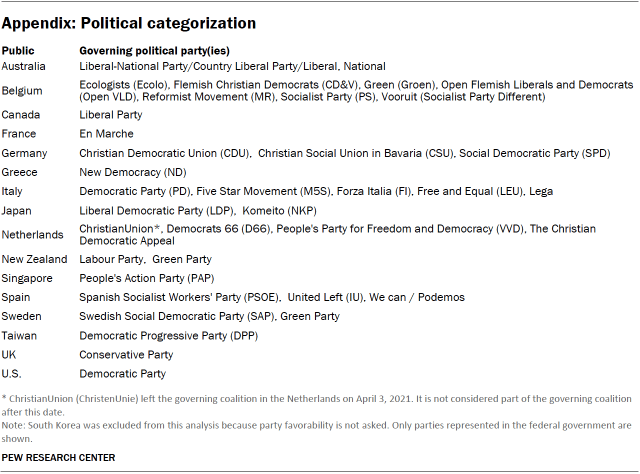For this report, we grouped people into two political categories: those who support the governing political party (or parties) and those who do not. These categories were coded based on the party or parties in power at the time the survey was fielded, and on respondents’ answers to a question asking them which political party, if any, they identified with in their survey public.1
In publics where multiple political parties govern in coalition (as in many European countries), survey respondents who indicated support for any parties in the coalition were grouped together. In Germany, for example, where the center-right CDU/CSU governed with the center-left SPD at the time of the survey, supporters of all three parties were grouped together. In publics where different political parties occupy the executive and legislative branches of government, the party holding the executive branch was considered the governing party.
Survey respondents who did not indicate support for any political party, or who refused to identify with one, were considered to be not supporting the government in power.
Below is a table that outlines the governing political parties in each survey public.





